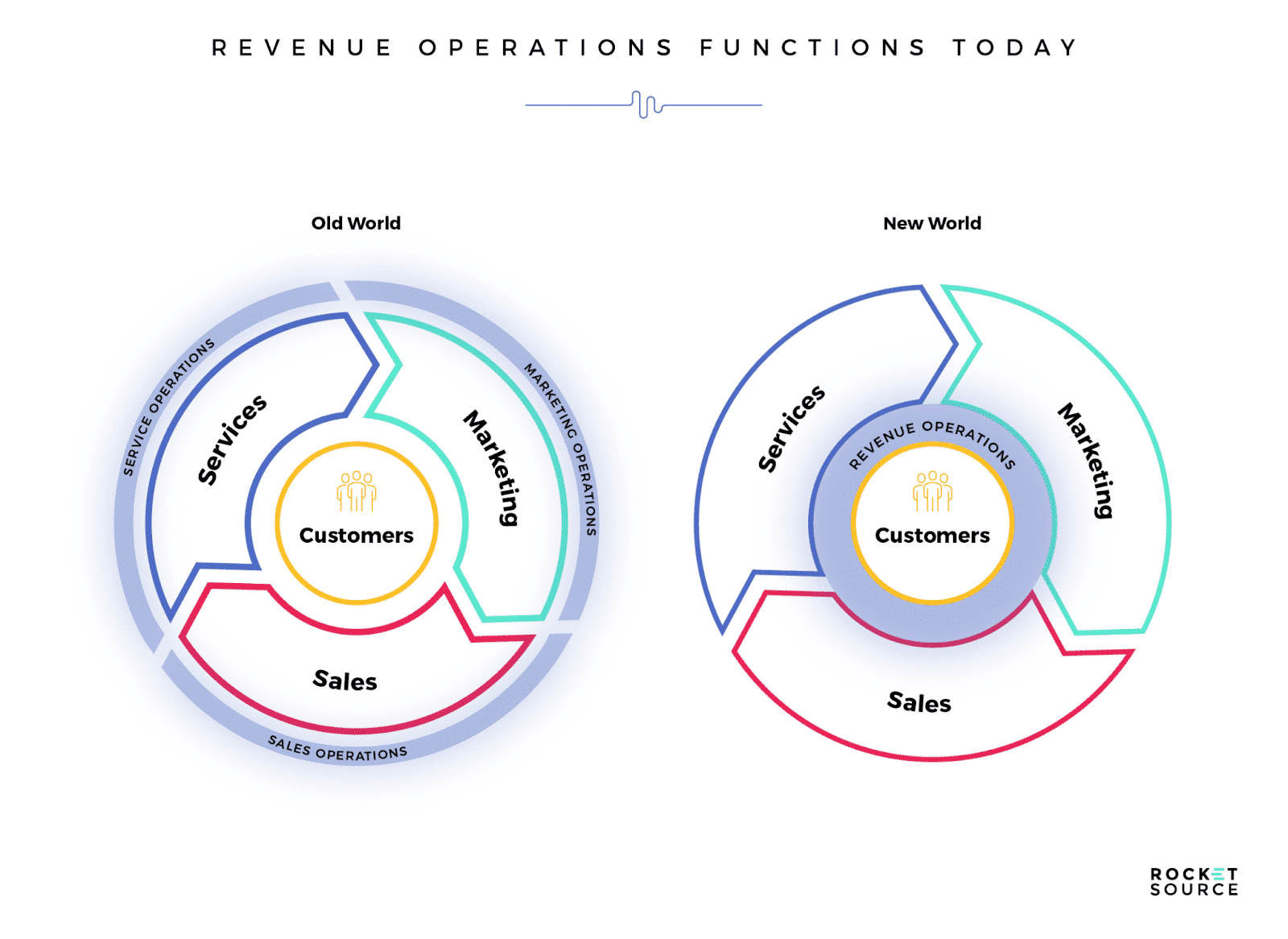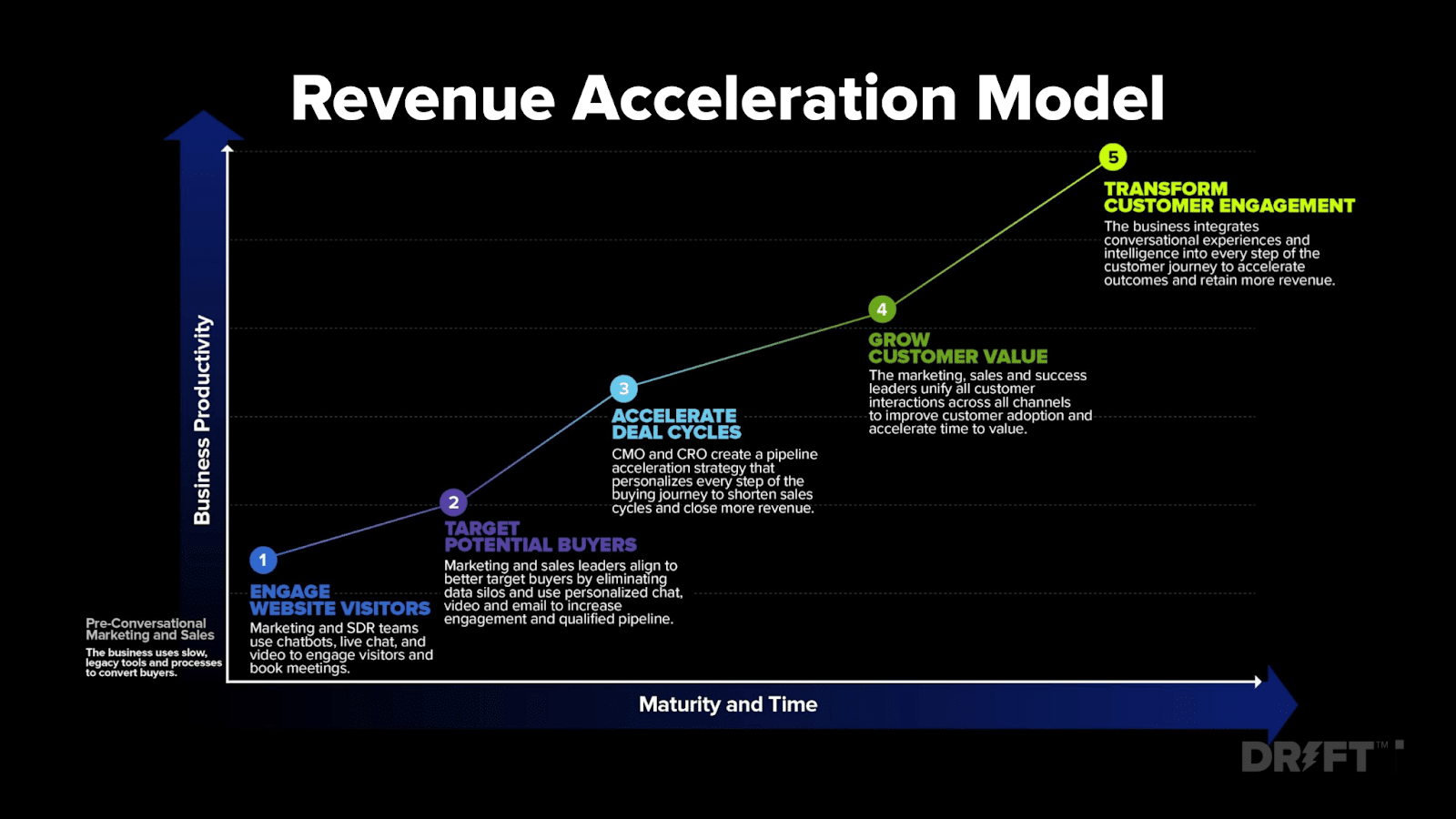What is Revenue Acceleration? Is It Different From RevOps?
Updated on May 30th, 2023.

Image Source: breadcrumbs.i
If you consider the big picture, revenue growth is the best indicator of business growth. Now consider the three functions of marketing, sales, and customer success. They have their own indicators of growth. And, while all of them contribute to revenue, they are often not working in a cohesive manner.
This misalignment is one big reason why the traditional approaches have hit their performance ceiling. But how do you align these three functions with revenue growth?
For that, we have a completely new approach, Revenue Acceleration. It enables you to align these functions in a way that results in revenue growth for you.
What is Revenue Acceleration?
Revenue Acceleration is the process of aligning Marketing, Sales, and Customer Success functions with the singular objective of achieving revenue growth.
How is the alignment made possible?
By transparent and constant communication between these departments, sharing data and tools and setting common revenue-related objectives.

Image Source: rocketsource.co
When these three functions are aligned, their performance is measured using KPIs that directly or indirectly measure revenue generation and growth.
As a result, you have three important business functions working together to realize the same objective. Thus, driving growth for a business becomes easy compared to traditional approaches.
How is Revenue Acceleration Used?
Revenue acceleration is used by multiple departments as follows:
Revenue Acceleration in Marketing
Sales and customer data are used in marketing to evaluate consumer behavior and determine what motivates successful purchases. In this method, businesses can develop better messaging and locate the right clients, thereby building toward greater revenue.
Revenue Acceleration in Sales
To understand why leads are attracted and ultimately the value that they receive, sales employs marketing and customer success data. They are able to create stronger proposals, engage in more insightful commercial exchanges, and close more business as a result.
Revenue Acceleration in Customer Success
To better understand the value that customers want, the issues they are attempting to resolve, and to develop better messaging for upsells and cross-sells, customer success uses data from marketing and sales. Revenue acceleration intimately links these three departments for business growth.
How does Revenue Acceleration Work?
The primary task of revenue acceleration is to align marketing, sales, and customer success functions. How does it achieve this alignment? There are three core components that allow for this alignment. They are as follows:
The majority of business decisions are data-driven. There is no business resource as valuable as data. Usually, each function operates using its own database. This creates data silos, prohibiting everyone from benefiting from additional data.
Firstly, a shared central database eliminates silos. Secondly, all functions have the same source of truth and information. Thus, their decision-making becomes more aligned with one another and in turn revenue growth.
The shared central database and a powerful AI and ML-driven data analytics tool are necessary for this step. The insights generated by this tool can be made available to these functions so they understand what factors drive revenue.
This knowledge can enable them to plan together and come up with strategies. Strategies formulated together with other functions yield better results as the collective efforts are concentrated in the same direction.
Specific KPIs
Teams need to know precisely which KPIs are directly tied to their success in order to function effectively. These KPIs are tracked specifically in a revenue acceleration plan, and each person involved must know how to work with them.
Accountability and the Ability to Take Action
While the data may be shared, each team must take full responsibility for the goals that they are driving. Now that all the teams are connected, everyone must understand how to achieve their objectives.
Each team needs to be able to react and respond to the information they learn from their data. If changes can’t be made to truly accelerate revenue, it’s not true revenue acceleration. Cross-departmental data provides incredibly potent lessons to implement revenue acceleration the right way.
Consistent Messaging
Consistent messaging from lead acquisition all the way through retention is one of the cornerstones of a revenue acceleration strategy. This means that marketing, sales, and customer success should all collaborate on how they speak and write so that they can eventually give the best value proposition to their clients.
Fast Feedback Loop
Revenue acceleration has three functions aligned and working together. The shared insights and database make it possible to measure and report performance quickly.
Thus, each team is notified about their performance quickly. They can then assess what action leads to what outcome and use that feedback to tweak their operations.
This fast feedback loop better positions these functions to take quick decisions to correct any deviations in performance and yield the expected results.
Wait. All of this sounds familiar to Revenue Operations, doesn’t it? Are these two the same thing or different? Let’s find out!
Revenue Acceleration vs Revenue Operations
It is hard to tell these two apart. Honestly, if you just consider their definitions, you’d think they are the same. You wouldn’t even be wrong for thinking so.
Revenue Accelerations and Revenue Operations make the same promise – to deliver revenue growth. Even how they achieve this is similar – by aligning sales, marketing, and customer success.
So you can use them interchangeably if growing revenue is your main business objective.
However, there is one difference that I did notice between the two. It was related to how these two processes align with sales, marketing, and customer success.
Revenue acceleration links the three functions using data and insights to align them. Whereas, Revenue Operations blurs the lines between the departments enough that they can function as a cohesive unit.
Besides this single differentiation, the two concepts are identical.
Alright then. With that cleared, let’s see how you can implement Revenue Acceleration.
The 4 Stages of Revenue Acceleration

Source: Drift.com
Engage with Website Visitors
The ability to provide an online customer experience as close to an offline retail experience was a distant dream for marketers. But, online is now mainstream in both
Customer experience is pivotal for B2B business. This is highlighted by the fact that 86% of B2B customers are willing to pay more for a good customer experience.
So, engage with every visitor to your website. For this, you can use a website tracking software like Salespanel to analyze first party intent data and show relevant content to qualified visitors. You can also use chatbots and popups to show messages.
Engaging in conversations and dialogue with your visitors forms the basis of building a relationship with them. This enables you to deepen your understanding of your customers. A deepened understanding equates to better decision-making.
Targeting Potential Buyers
Now, every visitor to your website is not going to be a potential buyer. In case you don’t have a setup that identifies and targets potential buyers, you’ll only end up wasting resources.
Thus, targeting potential buyers becomes a necessity to cut costs and drive revenue. The main focus needs to be the proper identification of targets.
Where did the lead originate from? What are their pain points? What industry do they belong to? And, the size of their firm, the scale of operations, and other necessary bits of information are also considered.
Using this information, you will be able to identify, target, and prioritize leads based on their quality and while. This will enable you to personalize the messaging they receive. Additionally, you will be able to carefully tailor their customer experience.
Customers value experience a lot. Thus, you would be able to cater to them with prompt responses, personalized treatment driven by past interactions, etc. to match their level of customer experience expectations.
Accelerating Deal Cycle
The good thing about technological advancement is that it makes previously impossible things possible. A machine capable of understanding and quantifying user behavior was nothing more than science fiction.
However, at present, not only are such systems available readily but are very accurate at decoding user behavior.
What does this mean for you?
The right system or tool will enable you to shorten the deal cycle. How exactly? By looking out for behavioral patterns and cues that indicate strong purchase intent. Again, a purchase intent and qualifier tool like Salespanel can be used to analyze intent and push buyers through the funnel.
Once the buyer has advanced in the customer journey, he will commit actions to showcase behavior that exhibits his purchase intent. When this happens the system will notify you and you can switch the chatbot with a sales representative.
This allows you to close deals quickly and make the best effective use of resources.
Growing and Nurturing Customer Relationships
The main reason why we have customer success teams is that B2B businesses realized how profitable it was to retain existing customers over the long turn.
Thus, making a sale is just the beginning of a long and mutually beneficial relationship. The positive and personalized customer experience that resulted in the sale needs to be carried forward.
There is onboarding, training, troubleshooting, scaling, updates, and other processes too that have to be handled properly.
Moreover, you also need to engage proactively with your customers. Being in touch with them regularly enables a healthy buildup of relationships. This is a necessary step in creating loyal customers that act as brand advocates.
Decreasing the customer churn rate will also significantly increase your revenue. Thus, you will not only boost profits in the long term but also maximize the customer’s lifetime value.
Salespanel for Revenue Acceleration
You can seamlessly connect marketing and sales and pass critical data with Salespanel’s RevOps and Revenue Acceleration Platform.
You will be able to capture leads from various acquisition funnels and transfer them to your CRM automatically. All moves and actions of the leads will be tracked and the teams will be notified about any positive developments.
Lead scoring and qualification are here to help you predictably qualify leads and move them across the funnel. Your sales teams will be informed about lead scores in real-time. Moreover, your sales team will be instantly notified when a lead exhibits strong purchase intent.
With Salespanel’s closed-loop reporting, you will even be able to connect marketing campaigns to revenue.
Conclusion
Aligning business functions that contribute to revenue generation and growth has become a necessity. Revenue Acceleration is one effective way of doing so.
Customer experience and customer relationships have taken the center stage now. If these are handled well, a business will keep growing its revenue over the long run.
Revenue Acceleration and Revenue Operations are in essence the same processes. You can choose either and still benefit.
Sell more, understand your customers’ journey for free!
Sales and Marketing teams spend millions of dollars to bring visitors to your website. But do you track your customer’s journey? Do you know who buys and why?
Around 8% of your website traffic will sign up on your lead forms. What happens to the other 92% of your traffic? Can you identify your visiting accounts? Can you engage and retarget your qualified visitors even if they are not identified?


